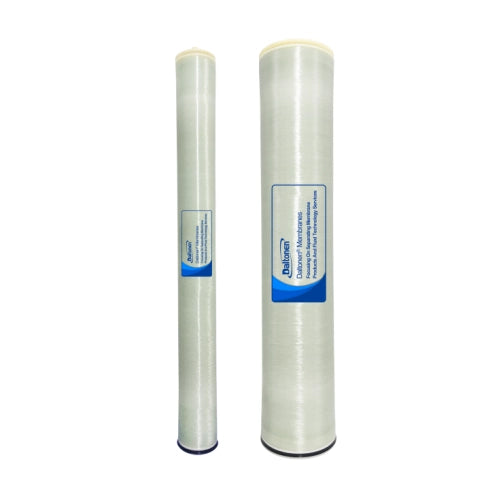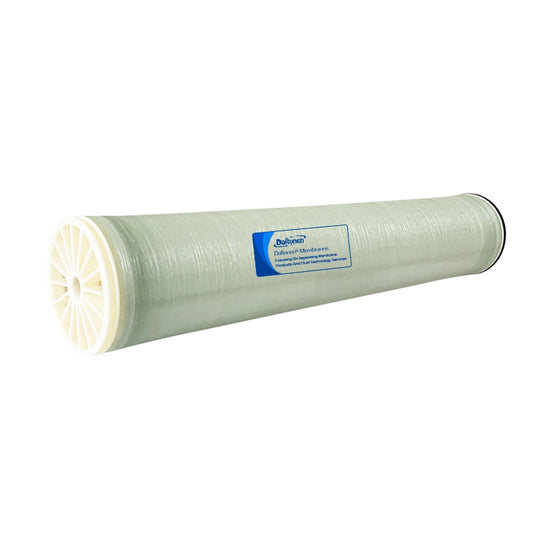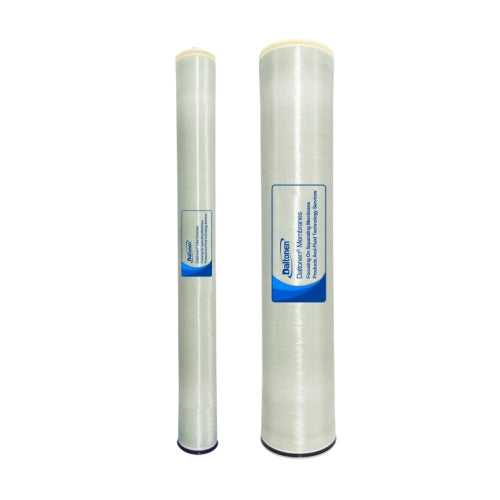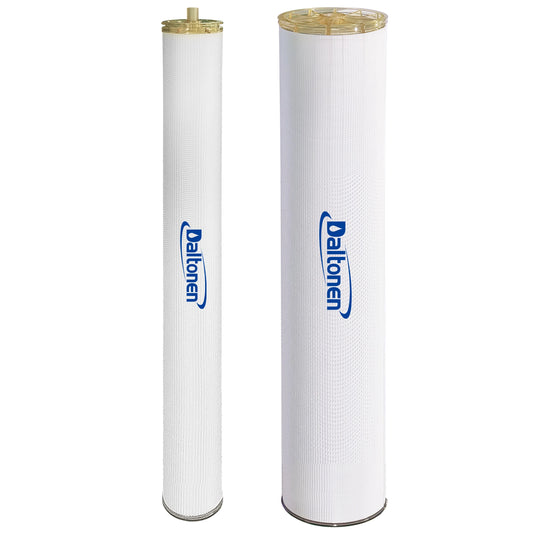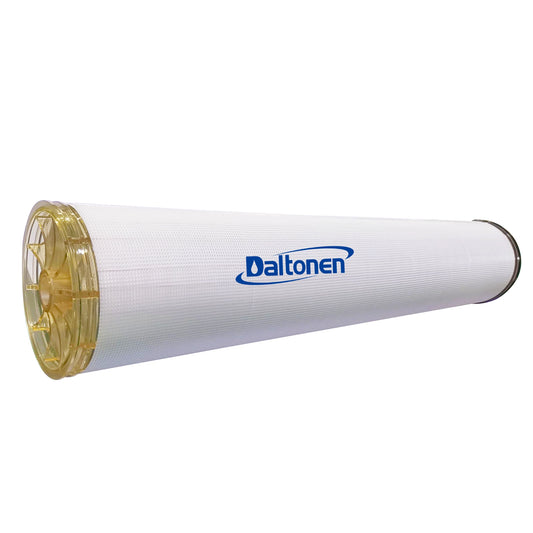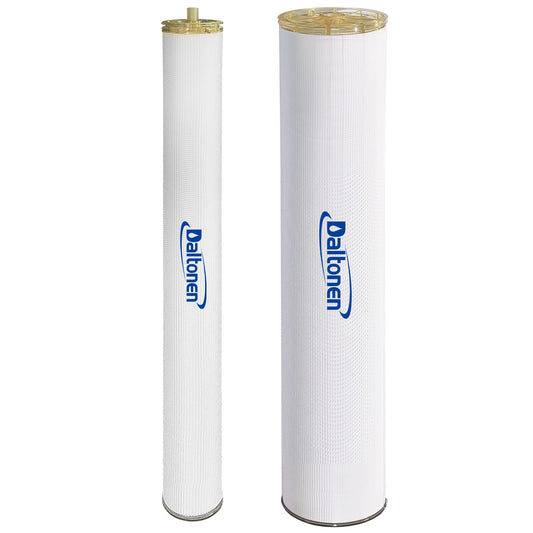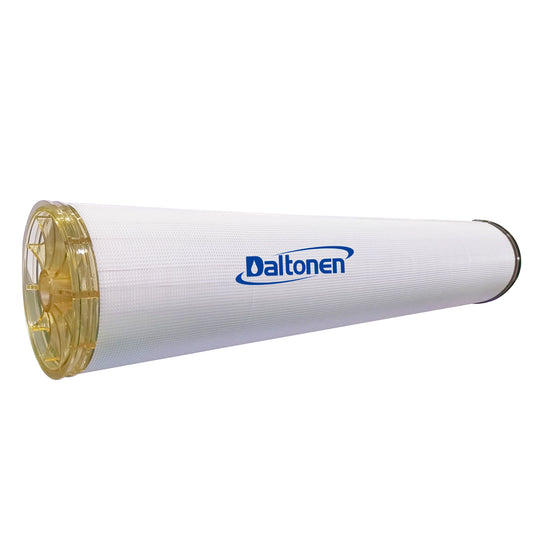High Concentration Wastewater Nanofiltration Membrane Process Design Scheme
26 Jun 2025
Process Flow and Equipment Configuration
The following is a nanofiltration (NF) membrane process scheme designed for high concentration wastewater with a flow rate of 6.5 t/h. The wastewater is characterized by high salinity (TDS 5,000-50,000 mg/L) and high organic content (COD 3,000-15,000 mg/L). The process employs a technology route of "enhanced pretreatment + selective nanofiltration + intelligent concentration" to achieve efficient separation and resource recovery.

Key Unit Design and Parameters
Pretreatment System (Ensuring Stable NF Operation)
| Unit | Design Parameters | Function |
|---|---|---|
| pH Adjustment Tank | Volume 2m³, 316L stainless steel; Dual-probe pH meter with ±0.1 precision; Automatic acid/alkali dosing | Adjust pH to 5.0-6.5 (increased monovalent ion permeability) |
| High-Efficiency Flocculation Tank | PAC (200ppm) + PAM (3ppm), mixing reaction for 15min; G-value gradient control (80→30 s⁻¹) | Remove colloids/SS, reduce turbidity (SDI ≤ 4) |
| Dissolved Air Flotation for Oil Removal | Dissolved air pressure 0.45MPa, reflux ratio 30%; Nylon fiber oil remover | Oil removal rate > 95% (oil content < 5mg/L), prevent membrane oil affinity pollution |
| Self-Cleaning Filter | 50μm precision, automatic backwashing when pressure difference > 0.5bar | Intercept large particles to protect high-pressure pump and membrane |
Nanofiltration Membrane System (Core Separation Unit)
| Parameter | Design Value |
|---|---|
| Membrane Components | 18 NF270-400 (each 37.2m²), two columns in parallel (3 cores × 6 pressure vessels) |
| Operating Pressure | 10-15 bar (frequency conversion control) |
| Recovery Rate Control | 75% base value (adjustable according to concentrate conductivity) |
| Flux Management | Design flux 20 LMH; Maximum flux ≤ 26 LMH |
| Membrane Shell Material | FRP fiberglass (pressure-resistant 600 psi) |
Concentrate Treatment Unit
| Scheme | Applicable Scenario |
|---|---|
| MVR Pre-concentration | When concentrate TDS < 100g/L: MVR evaporation to 300g/L → Crystallizer (cost reduction 30%) |
| Solidification and Landfill | For wastewater containing heavy metals or difficult-to-degrade organics: Add cement + chelating agent → Solidify into blocks (leaching toxicity meets standards) |
| Advanced Oxidation | When COD > 10,000 mg/L: Fenton reaction (H₂O₂/Fe²⁺=3:1) + activated carbon adsorption |
Anti-Fouling and Energy-Saving Design
| Risk Point | Prevention Measures |
|---|---|
| Inorganic Scaling | Add HEDP scale inhibitor (2-5ppm) before NF + Pulse flushing every 4h for 45s (flow rate 3× design value) |
| Organic Fouling | Weekly alkali cleaning (pH 11.5 NaOH + 0.3% EDTA, 40℃, 2h) |
| Biological Fouling | UV sterilization (40 mJ/cm²) + Monthly non-oxidizing biocide circulation (DBNPA 100ppm, 1h) |
| Energy Recovery | Install PX energy recovery device on concentrate side (recovery rate > 95%), reduce comprehensive power consumption by 18% |
System Control Strategy
# PLC Control Core Logic
def NF_control():
if conductivity(NF_inlet) > 30,000 μS/cm:
# High salinity protection
reduce_recovery_rate(to 65%) # Reduce recovery rate
elif delta_P > 1.3 * init_P: # Pressure difference increases by 30%
start_pulse_flush() # Pulse flushing
if delta_P > 1.5 * init_P:
trigger_CIP() # Chemical cleaning
if TMP > 18 bar: # High transmembrane pressure
start_emergency_flooding() # Emergency flooding
# Concentrate resource recovery judgment
if conc_NaCl > 15% and Cl⁻/SO₄²⁻ > 5: # Predominantly sodium chloride
send_to_evaporation_crystallization()
elif conc_Na₂SO₄ > 20%: # Predominantly sodium sulfate
send_to_freezing_crystallization()Operation Efficiency and Resource Recovery
| Indicator | NF Inlet | NF Permeate | NF Concentrate | Removal/Recovery Rate |
|---|---|---|---|---|
| TDS (mg/L) | 35,000 | 3,000-4,000 | 130,000-150,000 | Retention rate 89-93% |
| SO₄²⁻ (mg/L) | 12,000 | 800-1,200 | >45,000 | Retention rate > 95% |
| Cl⁻ (mg/L) | 18,000 | 8,000-10,000 | 55,000-65,000 | Retention rate 40-50% |
| COD (mg/L) | 6,500 | 800-1,500 | 20,000-25,000 | Retention rate 70-85% |
| Water Recovery Rate | - | 75-78% | 22-25% | - |
Investment and Operating Costs (for a 6.5t/h scale)
| Item | Cost | Notes |
|---|---|---|
| Equipment Total Investment | ¥1.85 million | Includes pretreatment, NF membrane group, control system |
| - Membrane System Proportion | ¥620,000 (34%) | Membrane life 3 years |
| Water Operating Cost per Ton | ¥9.7 per ton | - Electricity: ¥3.2 (electricity price 0.8 yuan/kWh) |
| - Chemicals: ¥4.1 (scale inhibitor + cleaning agent) | ||
| - Labor/Maintenance: ¥2.4 | ||
| Concentrate Disposal Cost | ¥18-35 per ton | Depending on resource recovery route |
Engineering Implementation Key Points
-
Compact Layout: Adopt "skid-mounted integrated design" (occupies < 60㎡), membrane group double-layer arrangement
-
Pipeline: Use Sch80 PVC-U (DN50 pressure rating 1.6MPa)
-
Material Safety Margin:
-
Equipment in contact with high-salinity wastewater: 316L stainless steel or CPVC
-
High-pressure pump: Hastelloy C276 seal (corrosion-resistant to halogens)
-
Commissioning Key Steps
-
Low-load start-up: Run at 50% flow rate for 12h first
-
Membrane flux test: Stepwise increase in flux (15→20→22 LMH)
-
Retention rate calibration: Continuous sampling for 72h to monitor ion separation efficiency
-
Cleaning program verification: Establish standardized CIP procedure
Risk Warning
-
If wastewater contains fluoride > 200mg/L, add fluoride removal pretreatment (calcium salt precipitation + aluminum adsorption)
-
If oil content > 300mg/L, activate pretreatment oil removal module
-
It is recommended to equip with online water quality analyzer (HACH SC200 controller + UV COD probe) to achieve intelligent early warning.
Tags:
